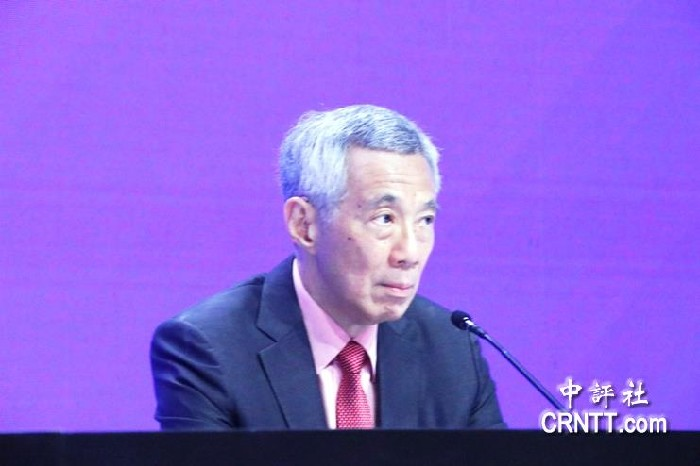
|
| 新加坡總理李顯龍(中評社 郭至君攝) |
中評社北京6月2日電(記者 郭至君)新加坡總理李顯龍出席第十八屆香格裡拉對話會并在開幕晚宴發表了近一個小時的主旨演講,以下為英文全文:
Dr John Chipman, Director-General and Chief Executive,IISS Your Excellencies,Distinguished guests, ladies and gentlemen,Good evening.Welcome to Singapore and to the 18th edition of the Shangri-La Dialogue.The view from Singapore and Southeast Asia.
Our world is at a turning point. Globalisation is under siege. Tensions between the US and China are growing. Like everyone else, we in Singapore are anxious. We wonder what the future holds, and how countries can collectively find a way forward to maintain peace and prosperity in the world.
What can the history of Southeast Asia tell us about avoiding upheavals and disasters in our path ahead? This year, Singapore is commemorating our Bicentennial. 200 years ago, Stamford Raffles, an Englishman, landed in Singapore and founded a trading post here. The Dutch had already colonised the Dutch East Indies, so the British were actually latecomers to Southeast Asia. Raffles was Lieutenant-Governor of Bencoolen, on the west coast of Sumatra. He saw the trade potential of the region, and decided to look for a new outpost for the British East India Company along the Straits of Malacca. He chose Singapore, and that changed our destiny.
The Dutch protested Raffles’ action furiously, but in vain. To preserve their monopoly, the Dutch had either prohibited foreign ships from operating in their ports, or imposed high tariffs. Raffles took a different approach. He set up Singapore as a free port. Trade boomed, and the settlement prospered. The more open approach of the British delivered superior results.
|
